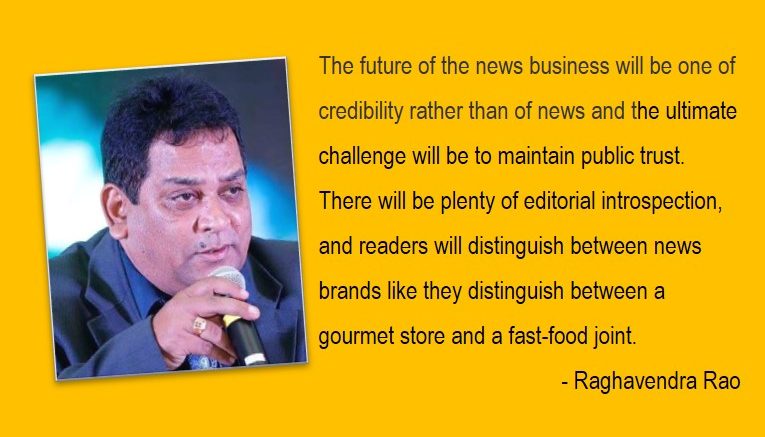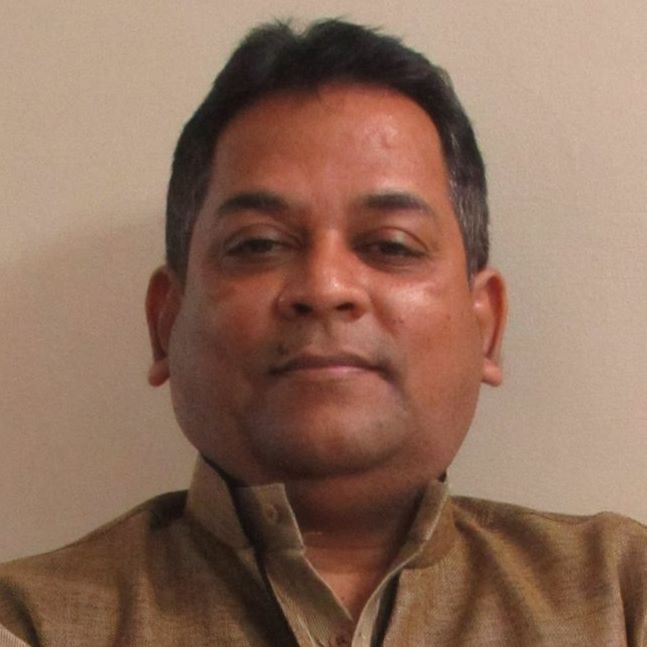In my personal view, this is the primary reason so many countries around the world are getting frighteningly polarized. More so in this polarized world, the challenge for the publishers will be to ensure that they give readers an accurate representation of reality—more grey than black and white.
In the next 10-12 years, I foresee three unique types of news media emerging in India. The first is similar to some of the 405 news channels in our country: players that are in the business for the clout, their ultimate motivation being in businesses like real estate, infrastructure or natural resources. The second will be highly bent news media aligned to a political outfit and with the clear agenda of forcing an ideology. Such ideology-led, openly partisan publications are today party mouthpieces but this format of content will evolve, get more subtle, be embellished and positioned as “balanced”, and go more mainstream. The third type is the stand-alone news media businesses that are essentially neutral—as is the tradition—reporting first and opining later. Of these, I would imagine, many will be publicly traded or private equity-backed and run as business-first organizations.
Because the ultimate challenge in all this will be to maintain public trust. The future of the news business will be one of credibility rather than of news.
There will be plenty of editorial introspection among the players who have been in the business for ages, and it makes me confident that readers will distinguish between news brands like they distinguish between a gourmet store and a fast-food joint. With 1.2 billion potential readers to reach, the Indian news media can never be a homogeneous bunch. Readers will have to make their choices not only with the brands they want to consume but also the stories they should relish.
Unlike the dramatic decline of the media in the west brought about by smartphones and the internet, the situation in India could not be more different. Freddie Dawson notes that a recent study from the Federation of Indian Chambers of Commerce & Industry suggests the value of the Indian newspaper industry has in fact grown by two-thirds in the past six years, and, according to KPMG, is predicted to fluctuate comfortably between 12 and 14 percent for the next several years.
According to Freddie Dawson, growth in the Indian newspaper industry is primarily driven by the country’s rapidly expanding middle class, and comparatively low internet penetration across the country.
However, while Dawson relates the strength of the industry to the expanding “middle class,” it is actually the “second India” to which he refers. Literacy rates and the national GDP per capita are rising, but this group is nowhere near as educated or affluent as their western peers who are considered “middle class.” It is this group’s level of social and economic progression more than anything that keeps alive India’s 82,000 registered newspapers with a total daily circulation of 110 million.
Literacy rates have increased in India — currently sitting at around 75 percent — and more attention is being given to government-funded literacy programs for those under age 25. As young people become literate, one of the first things they do is start reading in their own regional languages.
“First India” has taken to digital media in a big way, and consumes their news on apps and digital sites across a range of devices and platforms. However, “second India” still consumes media in a traditional manner, predominantly through printed press. Reading newspapers and a strong protective culture for free press dates back more than 160 years to when India was under British colonial rule. India is home to the Times of India, one of the oldest newspapers in the world, and the world’s largest circulated newspaper, but it is not English-language newspapers that are pushing print press growth, but non-English vernacular papers.
This leaves India in a unique situation, in which TV, digital and newspaper are all developing at the same time, unlike in the rest of the world where digital has blown everything else out of the water.
There are three kinds of companies in the Indian media sector:
Traditional old-school vernacular publications that cater to regional and mofussil markets. These newspapers are not focusing on digital and are in no rush to change because of their extensive readerships and continued high circulation month on month.
There are 20-25 larger companies spread across country — the Times of India, the Indian Express and Hindu to name a few — that are led by western-educated, English-speaking directors. These publications have witnessed the same media downturn as the rest of the world, and have their sights set on re-configuring for the impending change — but they still have huge readerships and profitable business models.
There is the new school of media startups, with no legacy, but that is much more technologically agile, and aims to create a new totally digital media.
Unlike in the west, where the digital explosion put even the biggest, best-funded legacy publications on the back foot, the three different media groups in India are developing side by side, passing each other like ships in the night.
Each group has benefits and disadvantages. New start-up players are working with the newest technology out there, they are well-funded, appeal to “first India” and are not held back by old mindsets. However, they lack a footprint, and are struggling to grow their audiences.
To date, media transformation is being slowed down by the fact that India still has one of the world’s lowest levels of internet saturation.
On the flip side, traditional and regional newspapers have massive and engaged audiences and a steady income from sales and advertising, but are held back from modernizing by legacy technology and outdated mindsets. Traditional newspapers earn most from print media advertising, and have a readership used to reading physical newspapers. While they might recognize the need for change — based on what has happened to the media in the west — a newspaper is only as good as its readers, and, as they say, it is difficult to turn around a supertanker.
However, unlike in the west, where media publications were forced to advance rapidly and try new things to reach audiences on a range of devices and mediums, Indian media companies seem to have the luxury of time on their side.
This struggle is likely to continue for the next five to 10 years, until new digital players have gained a larger audience, and until the expanding “middle class” in India truly adopts smartphones and digital technology. In the same way as young people pick up papers in their own languages now, as smartphones become cheaper and more accessible, they will pick them up too.
Unlike in the western world, where most users accessed the internet via computer before technology advanced to the stage of mobile devices, in India we are witnessing a technology “leapfrog” in which the majority of “second India” has skipped laptops and computers and are accessing the internet for the first time via mobile devices. Recent studies predict there will be 249 million mobile internet users by the end of 2016, and expect growth at more than 50 million people per year until 2020.
As “second India” becomes more digital, they will inevitably begin to pay more attention to digital media, and over time the media downturn will take hold in India as it did in the rest of the world. The difference is that India has about three to 10 years to prepare for this, and can lean on positive examples and new monetization models from the U.S. and the west to navigate the period of change.
A new digital landscape means increased competition, but with more than one billion potential consumers, the benefits and gains to publications who plan to make the transition should be worth the effort.
The views expressed here are that of the author and do not necessarily reflect that of Reputation Today.




https://countercurrents.org/2018/10/14/still-a-future-for-indian-newspapers/
Guwahati: Alternative digital media may be growing in India, but the conventional and mainstream medium including newspapers still has a future in the populous country. India today emerges as a land of millions of smart phone & internet connected computer users, but there is a sizable population which lacks access to the new medium and continues to depend on print media outlets.